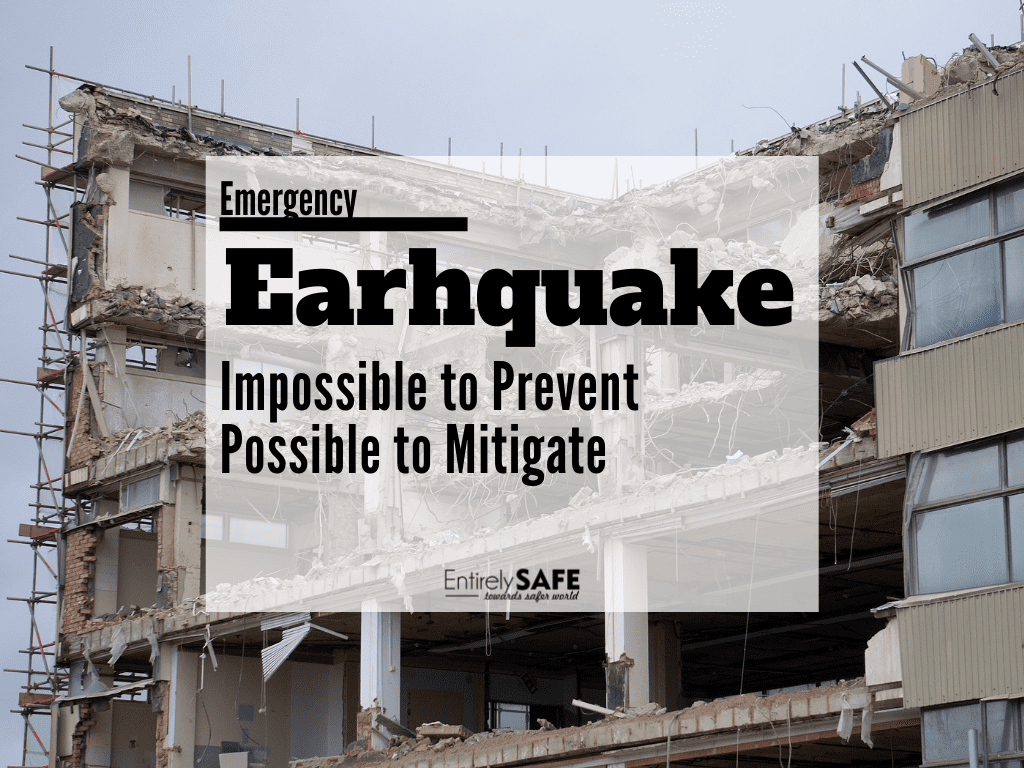An earthquake is the sudden, rapid shaking of the earth, caused by the breaking and shifting of subterranean rock. Initial mild shaking may strengthen and become extremely strong within seconds.
Additional earthquakes, called aftershocks, may occur for hours, days, or even months. Most are smaller than the initial earthquake, but larger magnitude aftershocks can also occur. Earthquakes can cause power outages or tsunamis. Earthquakes can happen at any time of the year and occur without warning.
While they can happen anywhere without warning, there are various areas of higher risk for earthquakes globally.
Why Prepare?
Although some quakes typically cause only insignificant or mild damage, larger earthquakes are always possible and could cause serious damage to buildings and public infrastructure. Because of this, it is important to know some simple safety rules if the ground begins to shake.
During an earthquake, drop to the ground, cover your head and neck with your arms and, if possible, a sturdy piece of furniture, and try to hold on until the shaking stops.
Be informed by receiving alerts, warnings, and public safety information before, during, and after emergencies.
Create and review your family emergency plan.
Identify safe places to take cover (such as under a sturdy piece of furniture) in your home, office, or school.
Practice how to “Drop, Cover, and Hold On”
Assemble an emergency kit.
Prepare your home for possible emergencies.
Fasten bookcases, hutches, and freestanding shelving to walls. Place large, heavy objects, as well as fragile objects, on lower shelves.
Know where your electricity, gas, and water switches and valves are located and how to shut them off.
Make a record of your personal property by taking photos/videos of your belongings. Store these records in a safe place.
The steps you should take during an earthquake depend on your location.
If You Are Inside
Continue to monitor media for emergency information.
Follow instructions from public safety officials.
If you are trapped, try calling or texting for help. Try tapping on a pipe or wall or using a whistle to help rescuers locate you.
Call Emergency Services to report emergencies including downed power lines and gas leaks.
Call Emergency Services to obtain shelter locations and other disaster information.
Stay away from downed utility wires. Always assume a downed power line is live.
Stay out of damaged buildings and areas until authorities deem them safe.
If you believe there is a gas leak, go outdoors immediately, and do not turn electrical switches or appliances on or off.
Check chimneys for visual damage and have a professional inspect the chimney for internal damage before lighting a fire.
If your power is out, follow power outage safety tips.
Report power outages to your utility company.
Use generators and grills outside because their fumes contain carbon monoxide. Make sure your carbon monoxide (it is a silent, odorless, killer) detectors are working.
If phone lines are down, use social media or texting to let others know you are OK.
Be a good neighbor. Check on family, friends, and neighbors, especially the elderly, those who live alone, those with medical conditions, and those who may need additional assistance.



